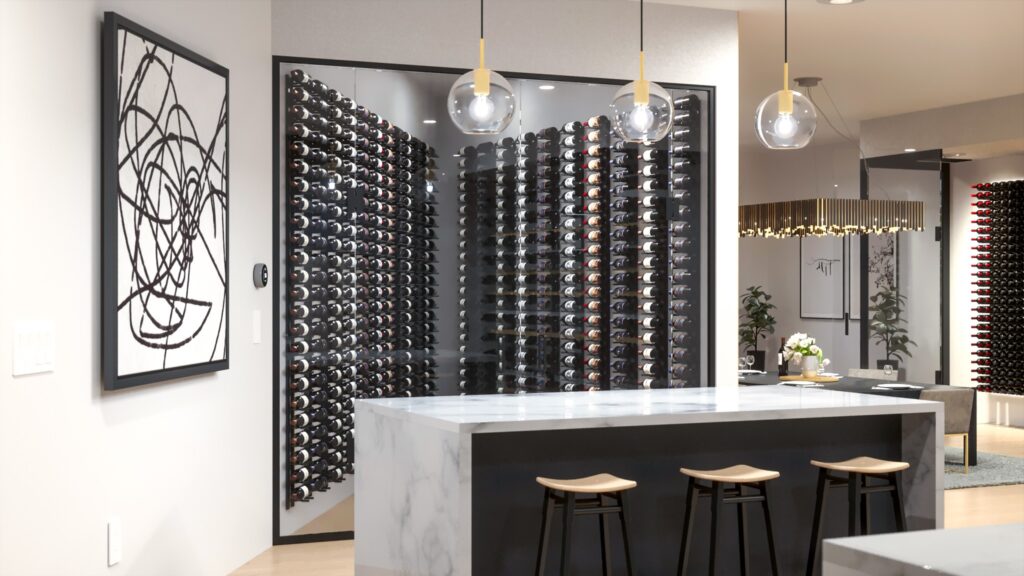For many wine lovers, a bottle is more than a beverage; it’s a promise of future enjoyment. We tuck special bottles away in wine cellars, wine cabinets, or under the stairs, dreaming of the perfect moment to open them. But a common question lingers: How long can wine actually be stored, and how do I know when it’s ready to drink?
The answer, like wine itself, is complex and nuanced. It’s not a simple case of “older is better.” Let’s decant the information you need to become a confident wine collector.
The Golden Rule: Not All Wines Are Meant to Age
This is the most critical concept to grasp. The vast majority of wine produced in the world (over 90%) is meant to be drunk within 1-3 years of its release. These wines are fresh, fruity, and delicious in their youth. Aging them won’t improve them; it will only cause them to lose their vibrant fruit flavors and become dull.
So, which wines can age? It comes down to a few key structural components.
The Pillars of Age-Worthy Wine
Wines with the ability to improve over time possess a powerful structure that allows them to evolve gracefully. Think of these components as the wine’s backbone:
Acidity: Acts as a natural preservative, keeping the wine fresh and vibrant as it ages.
Tannins: Found primarily in red wines, these compounds from grape skins, seeds, and stems provide texture and act as a preservative. They soften and polymerize over time, creating a smoother mouthfeel.
Sugar: Sugar is also a preservative. The world’s most legendary dessert wines, like Sauternes or Tokaji, can age for decades because of their high sugar and acidity.
Alcohol: Plays a supporting role in preservation.
Wines high in these elements have the potential to not just survive but truly transform in the bottle.
A Practical Timeline: When to Drink Your Wine
Here’s a general guide to the aging potential of different wine styles. Remember, vintage variation and producer style can greatly impact this.
Drink Within 1-3 Years (The Everyday Enjoyment)
These wines are all about primary fruit flavors. Enjoy them young and fresh.
Most White Wines: Pinot Grigio, Sauvignon Blanc, unoaked Chardonnay, Vinho Verde.
Rosé Wines: Almost all are best consumed in the first year or two after harvest.
Light-Bodied Red Wines: Beaujolais Nouveau, lighter Pinot Noirs.
Most Bottles Under $15.
Drink Within 3-5 Years (Short-Term Agers)
These wines have a bit more structure and can develop some nice complexity with a few years in the bottle.
Oaked White Wines: Fuller-bodied Chardonnay (e.g., from California or Burgundy), White Rioja, Alsace Riesling, White Burgundy.
Medium-Bodied Reds: Merlot, Cabernet Franc, some Zinfandels, and higher-quality Pinot Noirs.
Drink in 5-10+ Years (The Long Haul)
This is where the magic of aging really happens. These wines will undergo significant evolution.
Bold Red Wines: Top-tier Cabernet Sauvignon (e.g., from Napa Valley or Bordeaux), Nebbiolo (Barolo & Barbaresco), Syrah/Shiraz (from the Rhône or Australia), Tempranillo (Rioja Gran Reserva), Super Tuscans.
Aromatic White Wines: German Riesling (especially Spätlese or Auslese), Grand Cru White Burgundy, aged White Rioja.
Fine Champagne & Sparkling Wine: Vintage Champagnes gain incredible toastiness and complexity with age.
Drink in 10-20+ Years (The Legends)
Only the most structured and balanced wines from the best vintages can age this long.
First Growth Bordeaux, Grand Cru Burgundy, Cult Napa Cabs,
Sweet Dessert Wines: Sauternes, Tokaji, Vintage Port, TBA Riesling.
How to Tell if Your Wine is Ready to Drink
You’ve stored a bottle for years… how do you know it’s time? While opening it is the only true test, look for these signs:
The Vintage Chart: Research the specific vintage of your wine. Some years produce wines for long aging, while others are more approachable young.
Professional Reviews: Critics often provide drinking windows (e.g., “Drink between 2025-2040”). Sites like CellarTracker are invaluable for seeing what other enthusiasts are experiencing with the same bottle.
Visual Clues (in the bottle): While not foolproof, significant sediment in a red wine or a deep amber tone in a white wine can indicate advanced age.
The Final Sip: Trust Your Palate
At the end of the day, the “perfect” time to drink a wine is when you want to drink it. The journey of tasting a wine at different stages is part of the fun. Open a bottle with friends, share the experience, and discuss what you taste. Is it still fruity and tight? Or has it blossomed into something complex and silky?
There are few greater pleasures in the wine world than opening a well-aged bottle at its peak. With this knowledge, you’re well on your way to experiencing it for yourself. Cheers!

